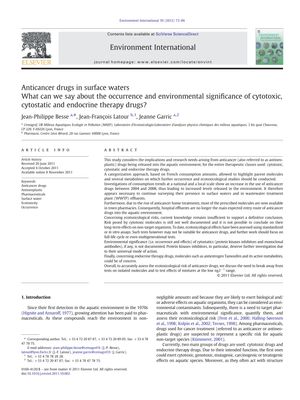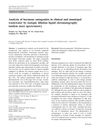Anticancer Drugs in Surface Waters
November 2011
in “
Environment International
”

TLDR Anticancer drugs are increasingly found in surface waters, and their long-term environmental effects are not well understood, requiring better testing methods.
The 2012 study examined the presence of anticancer drugs in surface waters and their potential environmental impact, noting an increase in their use from 2004 to 2008. It found that hospital effluents are no longer the main source of these drugs in water due to the rise of home treatments. The study reported that the ecotoxicological risks of these drugs are not well understood, and current tests may not be adequate for assessing their long-term effects on non-target organisms. It called for more comprehensive testing, including full-life cycle and multigenerational studies, particularly for protein kinase inhibitors and endocrine therapy drugs like Tamoxifen. The study also discussed the predicted environmental concentrations (PECs) of these drugs, with some exceeding 10 ng/L, and noted that actual measured concentrations were often below detection limits. The shift from hospital to home treatment has led to a more diffuse release of these drugs into municipal sewer systems, and the study emphasized the need for continued monitoring and public access to consumption data. It concluded that there is a need for more relevant in vivo assays to assess the chronic effects of cytotoxics and that traditional ecotoxicological assays may not be suitable for evaluating the environmental effects of anticancer drugs.

